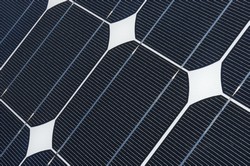Bio-inspired solar technology
Scientists within the PEPDIODE (Peptide-based diodes for solar cells) project developed a modular biomimetic system of molecules acting as light harvesters and electron guides. Peptide-based diodes allowed the unidirectional flow of electrons. They were coupled to tailor-made building blocks that tunnel electrons to photosynthetic modules to produce a photocurrent-generating device. The team successfully developed the technology to synthesise dense peptide arrays with a peptide laser printer. It successfully manufactured 10 000 peptides per square centimetre (cm2) and transferred them to a recipient solid support. In addition, partners succeeded in coupling the peptide arrays to a measuring chip. They also demonstrated the first proof of principle that could synthesise high-density peptide arrays – 25 million/cm2 – in small cavities. Specifically, scientists produced a nano-structured surface of 10 000 spots/cm2 of a synthetic amino acid fluorophore that can absorb light at specific wavelengths. Importantly, they created a process to make gold surfaces on individual pixel electrodes with excellent electrical contact to the complementary metal-oxide semiconductor (CMOS) component – a major achievement given that gold is not compatible with CMOS processing. The chip could also measure I-V characteristics of all peptides in the array simultaneously. Investigators developed protein scaffolds and peptide sequences that can be used to fix chromophores and reaction centres at defined distances from each other. These can also be used to self-assemble artificial reaction centres, light-harvesting units, and peptide-based diodes at defined sub-nano-scale distances, ultimately enabling cheap self-assembled, modular solar cells with most parts of the modules being built in Escherichia coli. The team also used small molecules that were expressed in a recombinant manner to find molecules that relay excited states to nearby chromophores. In addition, it investigated a small protein that could coordinate a pair of chlorophylls similar to the special pair in the photosystem reaction centres. PEPDIODE technology will open the door to low-cost, high-efficiency organic solar cells to produce electricity much more economically than conventional power plants and with major benefits for the environment.
Keywords
Peptides, solar cells, PEPDIODE, biomimetic, light harvesters



